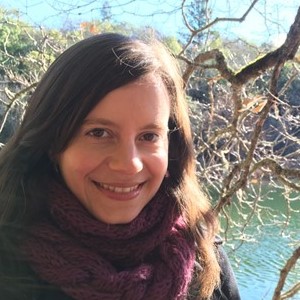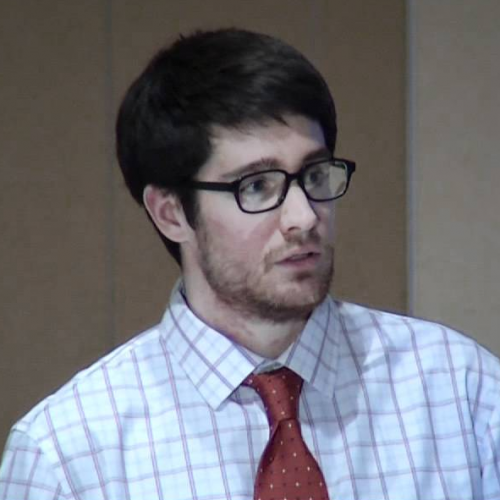Chemicals in Consumer Products: Exposure Science at the Forefront of Regulation
1:00 pm US Eastern Time
This webinar is the first in our new series, 20 Pioneers Under 40 in Environmental Public Health.
A world where consumer products are made with chemicals safe for people and the environment – this is the vision of the Safer Consumer Products branch at California’s Department of Toxic Substances Control. In today’s reality, however, most chemicals in consumer products remain unregulated, and even unknown to chemical regulators and the public. Those that do get phased out due to health concerns are often replaced with similar chemicals, in a game of whack-a-mole with unintended consequences.
The California Safer Consumer Products Regulations, effective as of 2013, take an innovative approach. They place responsibility on the consumer product manufacturers to ask whether a potentially hazardous chemical is necessary, and whether safer alternatives exist. To date, the program has identified three “Priority Products,” i.e. consumer products containing chemicals that may harm people or the environment, and is in the process of identifying several more. While the Safer Consumer Products Regulations allow wide flexibility in establishing a chemical’s potential adverse impacts to humans or the environment, regulators still struggle with data gaps. In particular, documenting how the manufacturing, use, or disposal of a consumer product can lead to human or environmental exposures to a specific chemical remains a challenge, as more often than not, multiple sources of exposure complicate the picture.
The Center for Integrative Research on Childhood Leukemia and the Environment (CIRCLE) is demonstrating how state-of-the-science research can enable regulators to better understand the pathways of exposure to chemicals in consumer products. CIRCLE investigators have worked to reveal the “links in the chain” connecting consumer products, environmental contamination, human exposure, and adverse health effects for children. Using a variety of exposure science tools – including environmental forensic microscopy, vacuum-cleaner dust sampling, and biological monitoring – CIRCLE is helping to fill data gaps for regulators. This webinar highlighted some of the work CIRCLE is doing to assess human exposure to legacy and emerging flame retardants used in consumer products.
Featured Speakers
 Simona Andreea Bălan, PhD, is a Senior Environmental Scientist at California’s Department of Toxic Substances Control (DTSC), in the Safer Products and Workplaces program. Her work directly contributes to implementing California’s landmark Safer Consumer Products regulations, aiming to reduce toxic chemicals in consumer products and inspire green chemistry. She received a PhD in Environmental Science, Policy and Management from UC Berkeley, and a BSc in Geosciences and Astrophysics from Jacobs University Bremen, Germany. She is also a Lean Six Sigma Green Belt, certified by the Governor’s Office of Business and Economic Development (GO-Biz) and the Government Operations Agency (Gov. Ops.). Prior to joining DTSC, she was a Senior Scientist at the Green Science Policy Institute, where she managed international projects on the use of flame retardants and perfluoroalkyl and polyfluoroalkyl substances (PFASs) in consumer products. Currently, she leads the Safer Consumer Products team working on PFASs.
Simona Andreea Bălan, PhD, is a Senior Environmental Scientist at California’s Department of Toxic Substances Control (DTSC), in the Safer Products and Workplaces program. Her work directly contributes to implementing California’s landmark Safer Consumer Products regulations, aiming to reduce toxic chemicals in consumer products and inspire green chemistry. She received a PhD in Environmental Science, Policy and Management from UC Berkeley, and a BSc in Geosciences and Astrophysics from Jacobs University Bremen, Germany. She is also a Lean Six Sigma Green Belt, certified by the Governor’s Office of Business and Economic Development (GO-Biz) and the Government Operations Agency (Gov. Ops.). Prior to joining DTSC, she was a Senior Scientist at the Green Science Policy Institute, where she managed international projects on the use of flame retardants and perfluoroalkyl and polyfluoroalkyl substances (PFASs) in consumer products. Currently, she leads the Safer Consumer Products team working on PFASs.
 Todd P. Whitehead, PhD, has a Bachelor’s degree in Civil Engineering from the University of Virginia and a Master’s degree in Environmental Engineering from the University of North Carolina-Chapel Hill. In the spring of 2011 he received his PhD in Environmental Health Sciences from the UC Berkeley School of Public Health. Currently, Todd is an Assistant Researcher and a Lecturer at UC Berkeley. He is involved in the identification of environmental risk factors for childhood leukemia, as part of the Center for Integrative Research on Childhood Leukemia and the Environment, a Children’s Environmental Health Center. Todd is an exposure scientist and his focus is in evaluating the utility of measurement techniques for characterizing chemical exposures in human health studies. His PhD dissertation dealt with estimating environmental exposures to indoor contaminants using residential-dust samples.
Todd P. Whitehead, PhD, has a Bachelor’s degree in Civil Engineering from the University of Virginia and a Master’s degree in Environmental Engineering from the University of North Carolina-Chapel Hill. In the spring of 2011 he received his PhD in Environmental Health Sciences from the UC Berkeley School of Public Health. Currently, Todd is an Assistant Researcher and a Lecturer at UC Berkeley. He is involved in the identification of environmental risk factors for childhood leukemia, as part of the Center for Integrative Research on Childhood Leukemia and the Environment, a Children’s Environmental Health Center. Todd is an exposure scientist and his focus is in evaluating the utility of measurement techniques for characterizing chemical exposures in human health studies. His PhD dissertation dealt with estimating environmental exposures to indoor contaminants using residential-dust samples.
This webinar was moderated by Steve Heilig, MPH, CHE's director of Public Health and Education. It lasted for 45 minutes and was recorded for the call and webinar archive.


